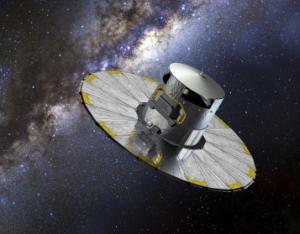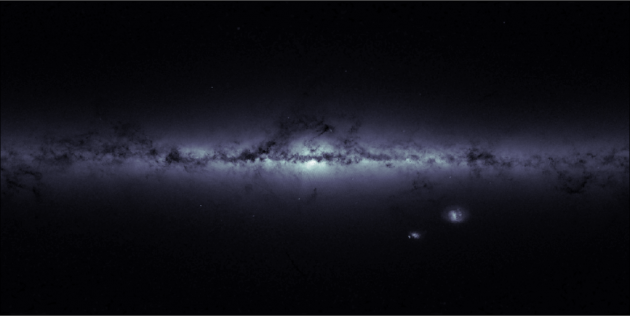Gaia

Credit: ESA/Space in Images
Gaia is a European Space Agency (ESA) mission. The goal of Gaia was to make a 3D map of the Milky Way This map will help scientists learn how our galaxy formed and changed over time. Gaia was launched in 2013. It is expected to keep working until it runs out of power in 2025.
Gaia's map includes over 1 billion stars. This makes it the largest catalogue of its kind ever made. However, this is only about 1% of the stars in the Milky Way. The huge Gaia database lets scientists look for objects which are similar to each other. It also lets them make connections between events in space.
Gaia measured where each star is and how far away it is. It did so using a process called astrometry. Gaia repeated this process 70 times for each object. This made sure the measurements were accurate.
Gaia has been able to make many discoveries during its mission. It has found over 100 exoplanets, as well as high-energy quasars and low-temperature brown dwarfs. In 2014, Gaia found the first supernova in a galaxy beyond the Milky Way. Closer to home, Gaia also mapped more than 13,000 asteroids in our own Solar System.
ESA have published the data collected from Gaia. You can search the archive here.

Credit: ESA/Gaia

